Sign up for our Book Club newsletter
Get the latest news, events and more from the Los Angeles Times Book Club, and help us get L.A. reading and talking.
You may occasionally receive promotional content from the Los Angeles Times.
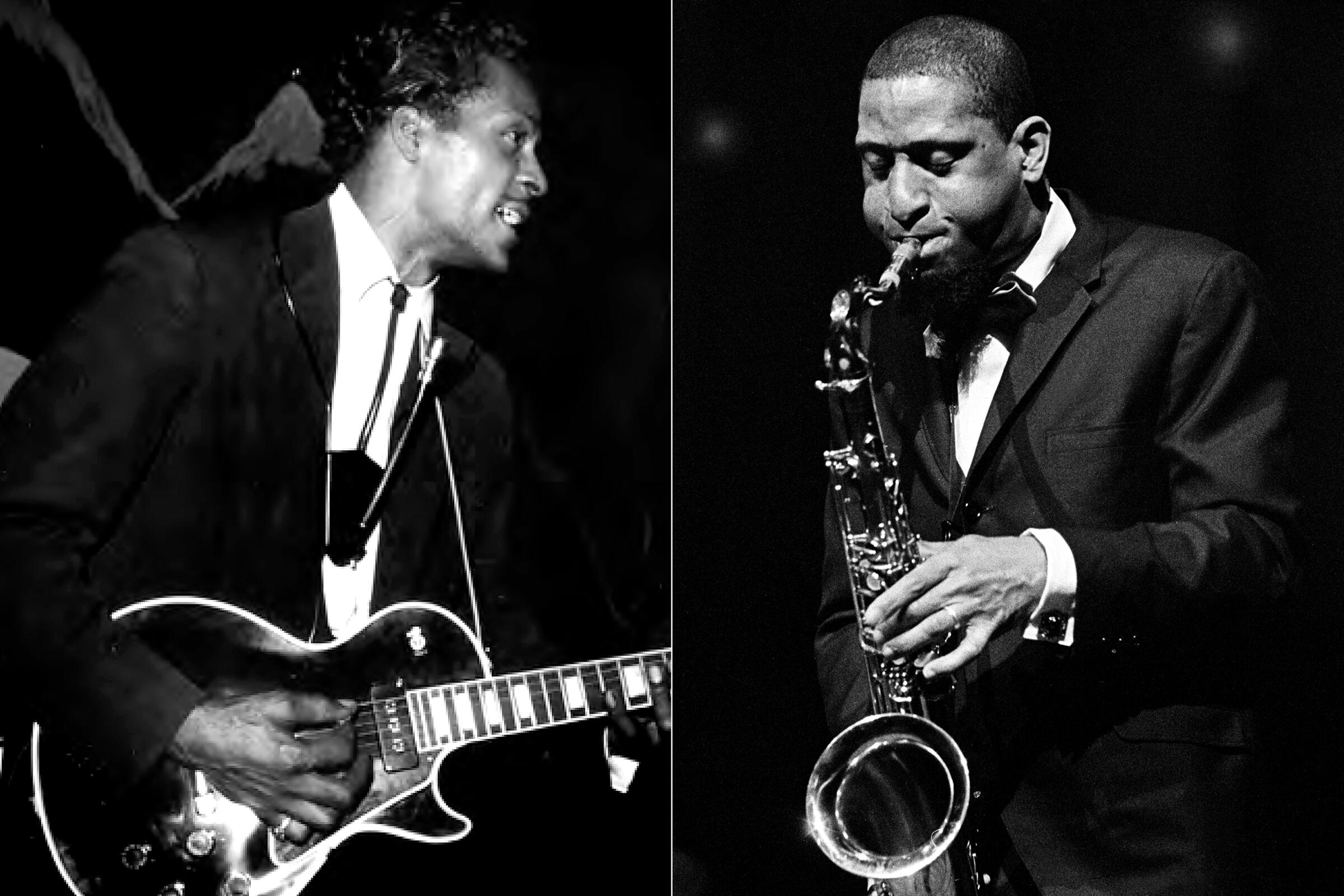
Review
Two biographies of pop musical pioneers
Saxophone Colossus: The Life and Music of Sonny Rollins
By Aidan Levy
Hachette: 784 pages, $35
(Out Dec. 6)
Chuck Berry: An American Life
By RJ Smith
Hachette: 432 pages, $32
If you buy books linked on our site, The Times may earn a commission from Bookshop.org, whose fees support independent bookstores.
The middle of the 20th century was a remarkably fertile period for musical innovation, much of it fueled by Black artists contending with a country unwilling to relinquish its racist power structure. Among the trailblazers were a perpetually practicing jazz saxophonist from Harlem whose mastery of harmony and rhythm put him on the ground floor of what would come to be known as hard bop and a wild young man from St. Louis, who blended hillbilly music and rhythm and blues to pioneer a nascent genre called rock ânâ roll.
Itâs hard to imagine the last 75 years of music without Sonny Rollins and Chuck Berry. Now they are the subjects of major new biographies â one of them definitive, the other just a lot of fun.
Aidan Levyâs âSaxophone Colossus: The Life and Music of Sonny Rollinsâ is a whopper, nearly 800 pages of deep-dive research that follow the man known as âNewkâ from before the beginning, with his familyâs origins on the West Indian island of St. Eustatius to the present day. (Rollins is still kicking at 92, in defiance of actuarial charts for golden age jazz musicians in particular.) RJ Smithâs âChuck Berry: An American Lifeâ is roughly half as long and twice as rollicking, befitting its subject. Itâs got a rock ânâ roll tone, for better and worse, but it still manages to bring Berry into sharp focus.
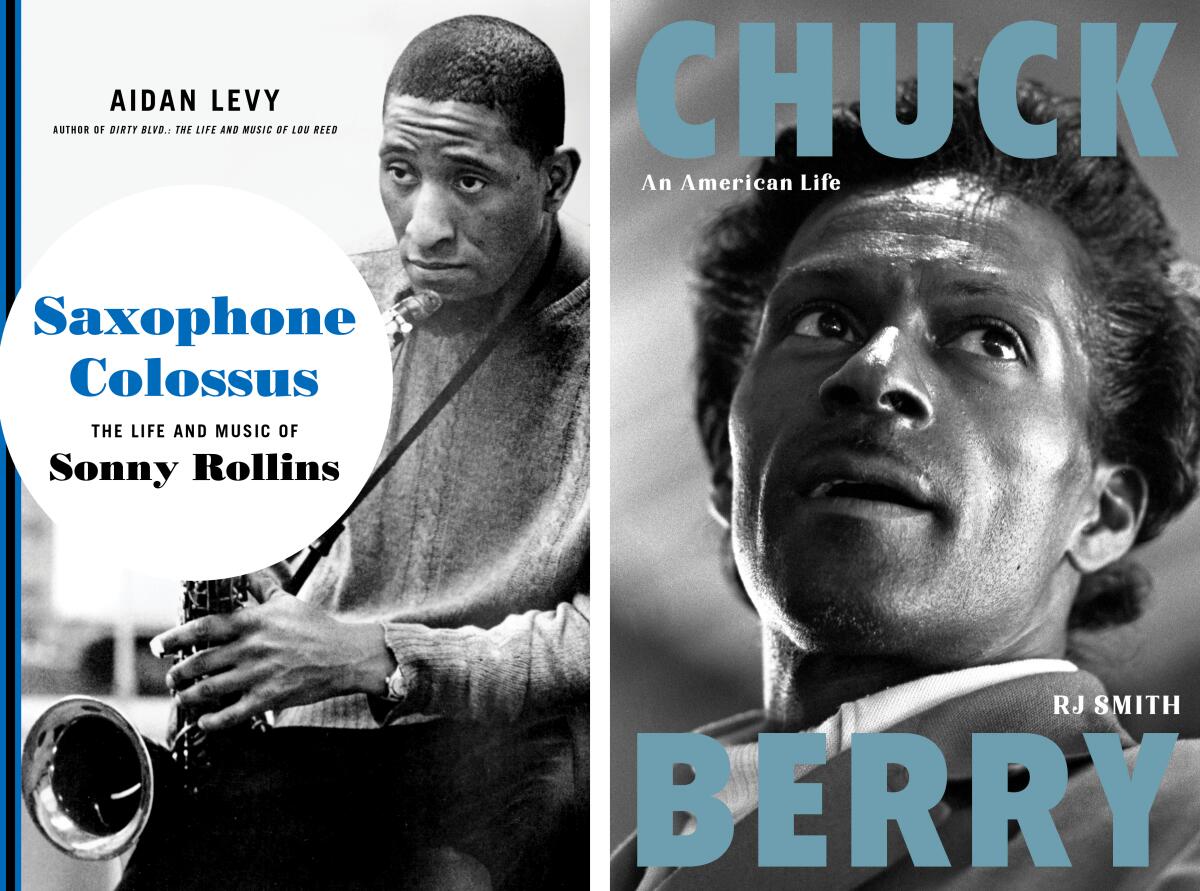
Rollins cut his teeth in Harlemâs storied Sugar Hill neighborhood, soaking up the action in nearby ballrooms, cabarets, speakeasies and churches, all of which fed his appetite for the sounds and sights of live performance. He got his first sax as a boy and practiced for hours every day. He enrolled at Benjamin Franklin High School, which had a progressive reputation but a music faculty with no interest in jazz. âFor me, it was a waste,â Rollins would remember. Smalls Paradise and the Savoy Ballroom were his classrooms.
Across decades, Cicely Tyson and Miles Davis were the epitome of a glamorous power couple. But behind the scenes, his drug abuse and philandering took its toll.

Levy, whose previous work includes âDirty Blvd.: The Life and Music of Lou Reed,â paints a vivid picture of this milieu, its buzzing nightlife and its varieties of temptation waiting behind what seems every door. Throughout âSaxophone Colossus,â he weds his extensive research to a feel for detail and narrative; the book is certainly long, but it has too much great reporting to be dry.
Weâre with Rollins as he looks up to fellow sax players Coleman Hawkins and Charlie Parker, both of whom he will come to emulate, and as he starts to jam and record with the rising stars of his own generation, including Miles Davis and Thelonious Monk, both of whom leap to life in these pages. These are the artists whose aggressive improvisation, rhythmic thrust and fiery soloing put hard bop on the map.
Weâre also with Rollins as his heroin addiction slowly consumes him â as it did so many other jazz greats â culminating in a half-baked 1950 armed-robbery plot that never gets off the ground but still lands him on New Yorkâs Rikers Island for 10 months. (He was carrying the gun.) âSonny was a twenty-one-year-old black man in a city that was predisposed to find him guilty,â Levy writes. New York police werenât happy with the racial mixing going on at downtown clubs, and jazz musicians were easy targets.
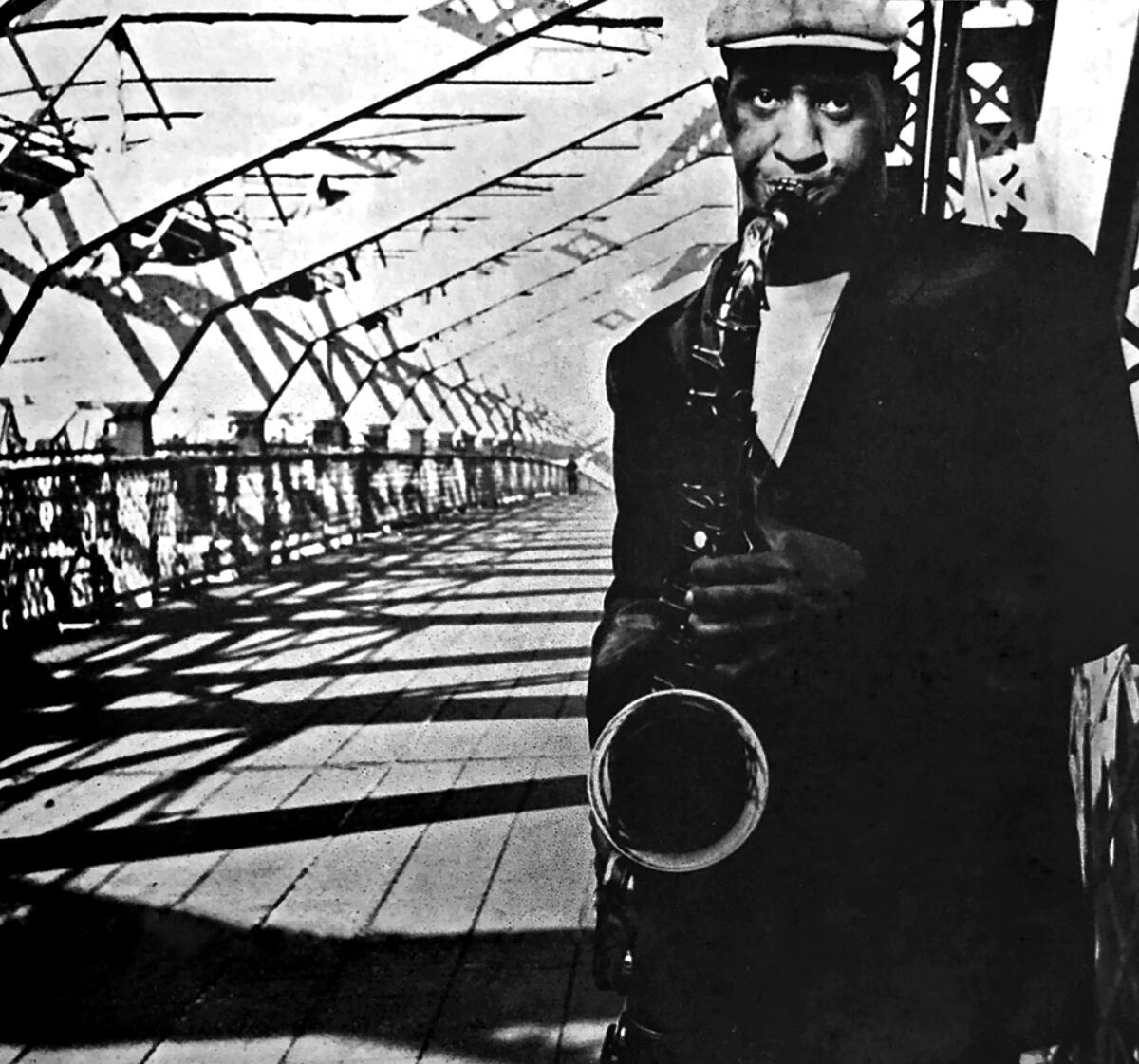
The bookâs most energetic passages accompany Rollinsâ most defining moments, including the 1956 album that gives the book its name, toplined by the calypso-flavored âSt. Thomas.â (Levy is excellent on the history of calypso and the late-1950s American craze for the genre.)
And then thereâs the bridge. Done with heroin but still drinking too much, burned out on the scene and studio dates, Rollins vanished â or so it seemed. In fact, he took his horn every day to Williamsburg Bridge, a neglected span connecting the Lower East Side of Manhattan to Brooklyn, where he blew and blew in blissful anonymity as he got his head together. As Levy writes, âThe Williamsburg Bridge was exactly what Sonny was looking for â a wide-open space where nobody else wanted to be.â Rollinsâ hideaway would inspire one of his greatest albums, 1962âs âThe Bridge.â
Sonny Rollins, nearly 80, looks to the future
While Rollins was pushing jazz toward new frontiers in the early â50s, Berry was gigging around the Midwest, including St. Louis and nearby East St. Louis, Ill., hometown of Davis. Around this time, Berry realized that he had as many white fans at his shows as Black, and he learned to cater to them. As Smith writes, âHe inserted what he termed âfictitious impressionsâ of white folks into his delivery. Bearing down on certain words, he got a country feel across: âI stressed my diction so that it was harder and whiter,â he said.â
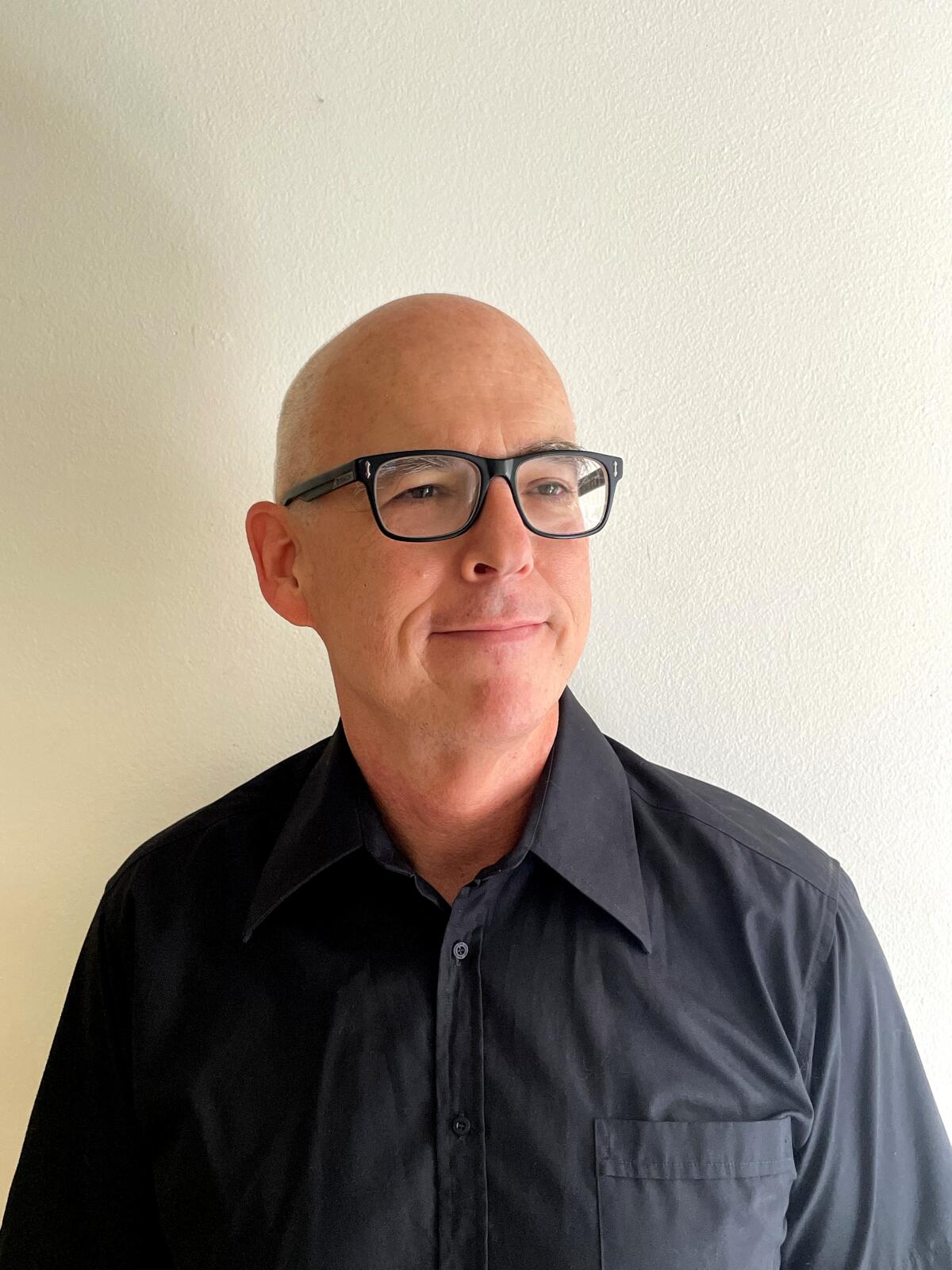
Much has been made of the gold Col. Tom Parker mined in Elvis Presley, a white man who could sound Black. Berry found his success as a Black man who could sound white, with songs largely about two subjects â cars and sex â to which most young listeners could relate. Itâs little wonder that heâs a founding father of rock ânâ roll.
He had something else in common with Presley: he got bilked out of a lot of his money. When Berryâs âMaybelleneâ hit big in 1955, he noticed that two other men shared songwriting credit with him. One was Alan Freed, the impresario who helped make the song a hit by spinning it ad infinitum on the radio. The other was some guy named Russ Fratto. Fratto was a mobbed-up buddy of Leonard Chess who, with his brother, Phil, ran Chess Records, the label for which Berry recorded. Leonard owed Fratto money and seems to have paid him (and the mob) back by giving him a piece of Berryâs hit. This was how things often worked back then.
Smith, whose previous book subjects include James Brown and photographer and filmmaker Robert Frank, works best in the realms of cultural criticism and history, and Berry, who died in 2017, offers plenty of material. Sometimes Smith is a little too eager to flash his hep credentials. Here he is on Berryâs bandmate Johnnie Johnson: âAfter Johnsonâs old lady in Chicago split on him, he dropped down to East St. Louis in 1950.â Right on, man. Nevertheless, he has a firm grasp of Berryâs meaning, and he tells the story with a sense of color his subject deserves.
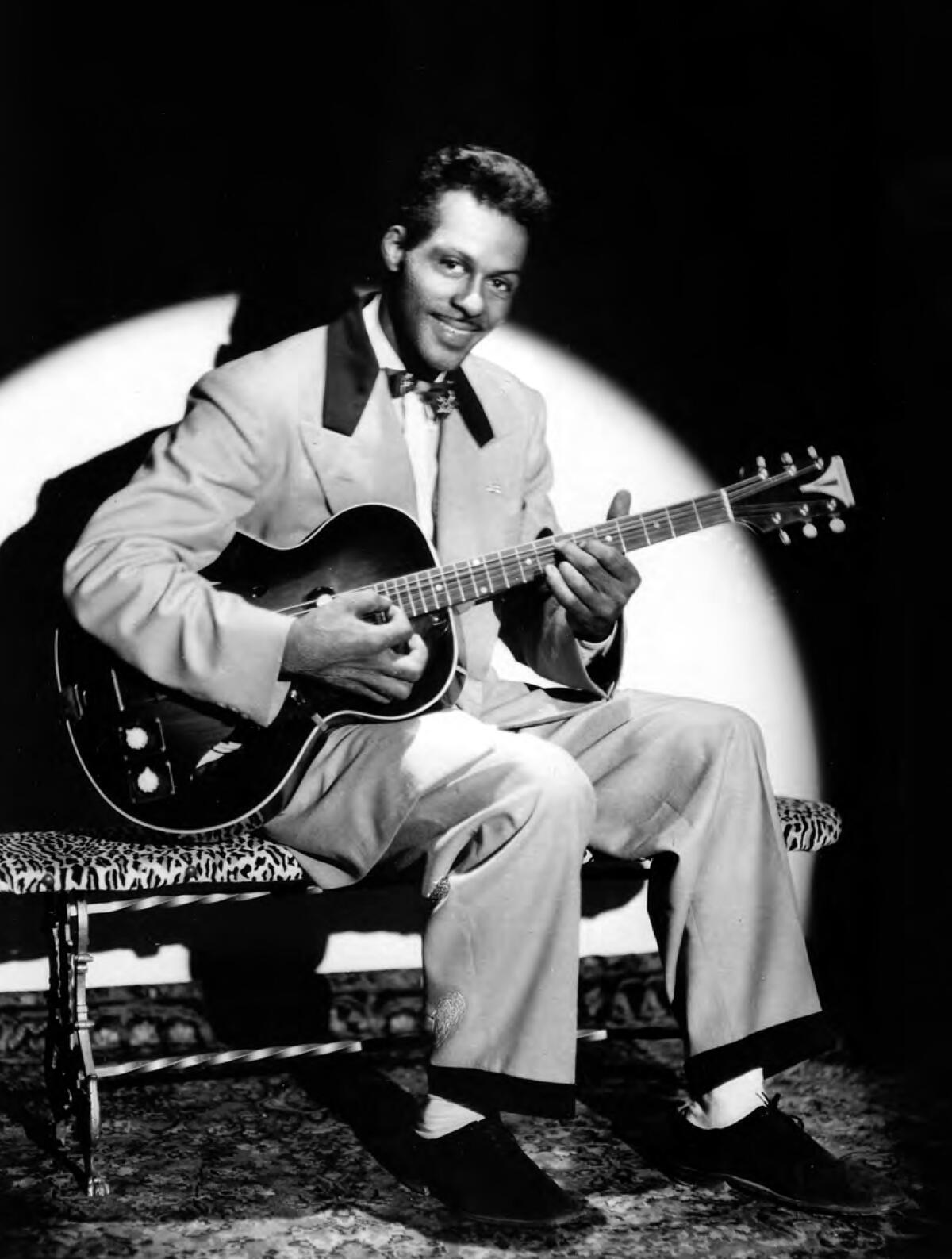
In the early 1970s, more than a decade after rock pioneer Chuck Berryâs first round of fame and fortune was over, he was booked for an East Coast appearance, where he hired an aspiring group of young musicians to back him at the show.
By now, both Rollins and Berry hold secure places in American musical history. These books help explain how they got there, what it cost them and why we should care. They carved out indelible places in the culture, helping to define two of the most vital popular art forms of the century. Learning more about them helps us understand what we hear today in a musical landscape that blurs categories and styles with the ease of a shopper trying on clothes. Of course, it wasnât always so easy. Like all innovators, Rollins and Berry worked, then worked some more. Their sweat would become our pleasure.
Vognar is a freelance writer based in Houston.
Sign up for our Book Club newsletter
Get the latest news, events and more from the Los Angeles Times Book Club, and help us get L.A. reading and talking.
You may occasionally receive promotional content from the Los Angeles Times.